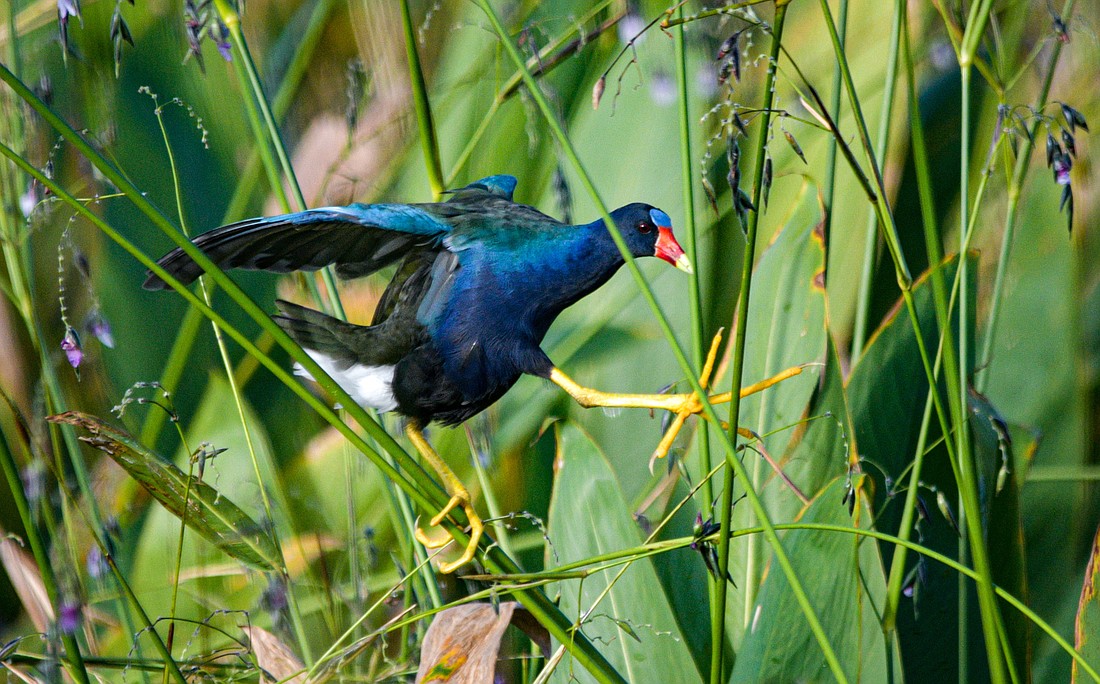- December 4, 2025
-
-
Loading

Loading

With their big yellow feet, purple, blue and green bodies, a pale blue shield on their forehead, and a bill that is red at the base and yellow at the tip, purple gallinules are one of the most colorful birds in North America. Closely related to the common gallinule, they, too, are loquacious birds, who feed, roost and nest in marshes.
Purple gallinules are monogamous and form long-lasting bonds. Couples jointly build their nests in dense marsh vegetation. To help protect their nests from terrestrial predators, they build them above deep water. As another safeguard, they often build extra “sham” nests to confuse potential predators.
Gallinule couples take turns incubating their eggs. They are known for their “change of guard” ritual, when swapping places on the nest: The returning bird will offer up a piece of grass or a tiny leaf. The incubating bird indicates it is ready to leave the nest by accepting the offering, and adding it to the nest. The partner then takes over incubation duties.
Gallinule chicks are “subprecocial,” meaning they can walk soon after hatching but cannot feed themselves for the first few weeks of life. Immature purple gallinules from earlier nestings and juveniles will help parent feed the younger siblings. Such cooperative breeding, in which individuals, others than the parents, help feed the young, is known as alloparental care, and has been reported in over 150 bird species.
Gallinules depend on wetlands, with a mix of open and densely vegetated areas, to survive. They are therefore extremely vulnerable to declines in water quality, including changes in water levels, pollution, and runoff. And habitat loss, due to development, is also a concern.
Save our Seabirds is a non-profit organization whose mission is to rescue and rehabilitate
sick and injured birds, releasing as many as they can, while educating our community about
avoiding injuries and preserving habitats.